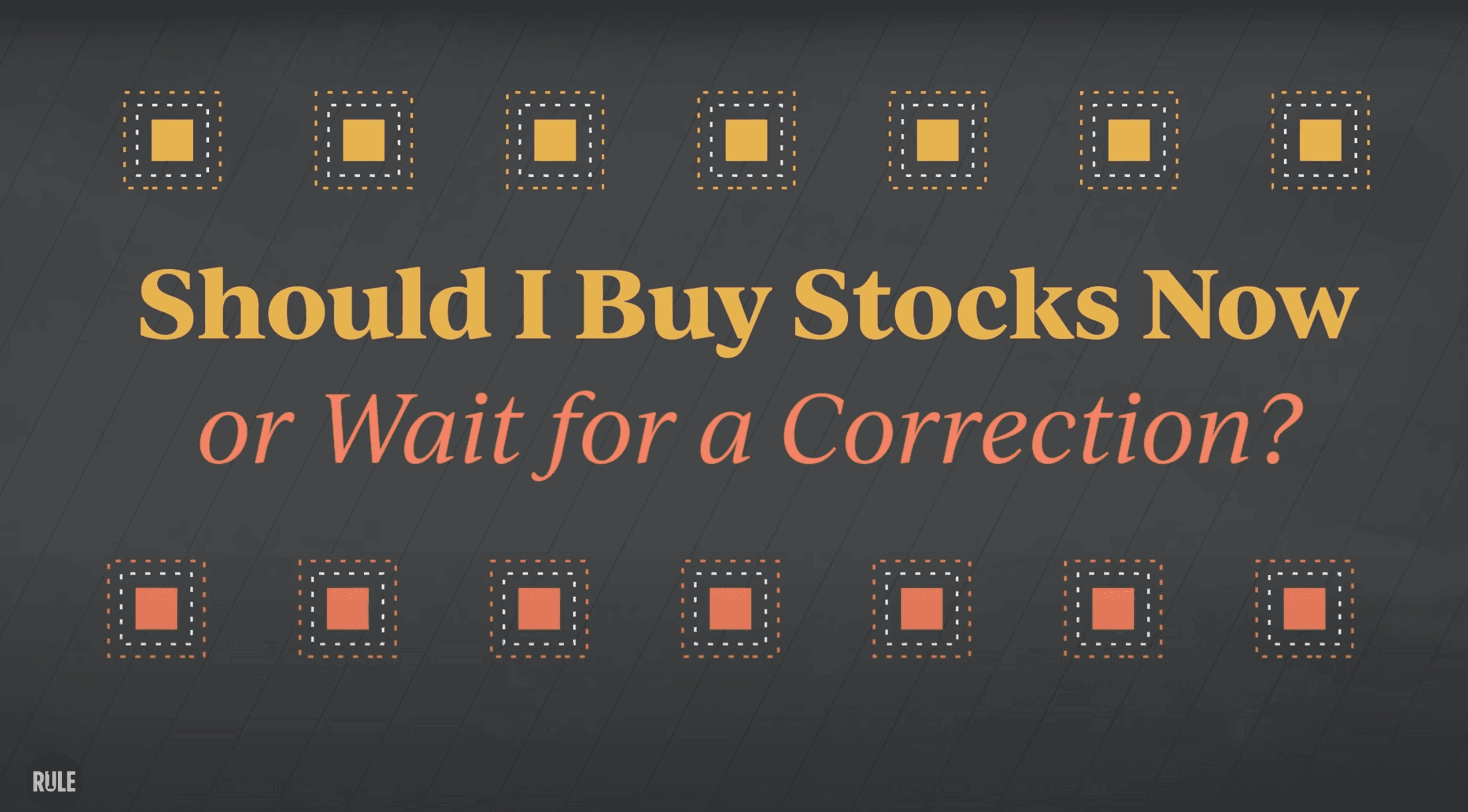Should You Buy Stocks at All-Time Highs? Here’s What Smart Investors Actually Do
The question I get all the time is: “Should I be buying stocks right now? Or wait for a market crash?”
It's a smart question—because the market is sitting near all-time highs. The S&P 500, the Dow, big-name tech stocks—almost everything looks like it’s priced to perfection. So of course, the fear kicks in: What if I buy now and it all collapses tomorrow?
But here’s the thing—fear and greed are the two forces that drive most people’s investing decisions, and if you don’t understand how to separate emotion from strategy, you’re likely to make costly mistakes.
Let’s walk through the mindset and method I personally use—a Rule #1 strategy that works regardless of what the market is doing.
The Emotional Minefield of High Markets
Even the most rational investors can get emotional—especially when faced with the two competing fears that dominate high markets:
Fear of buying at the top: “What if I invest today and the market crashes tomorrow?”
Fear of missing out (FOMO): “What if I wait, and the market keeps going up without me?”
It’s a psychological tug-of-war. You’re worried about losing money, but you’re also worried about being left behind.
And when emotions take the driver’s seat, investors typically do one of two things:
They jump in too fast—chasing momentum.
Or they stay out entirely—waiting for the “perfect” dip that may never come.
Neither approach is smart. Instead, we need a framework—a strategy grounded in logic, discipline, and facts. And that begins with understanding the kind of investor you want to be.
The Passive Approach: Why “Time in the Market” Matters—But Isn't Everything
If you’re a passive investor, the conventional advice is: Don’t worry about timing. Just stay invested.
And there’s data to back that up.
Take Fidelity’s study: if you had invested $10,000 in the S&P 500 starting in October 2003, you’d have about $88,000 by now. But if you missed the 10 best-performing days in that 20-year span? You’d end up with just $50,000. That’s a $38,000 difference—simply because you weren’t in the market on a few key days.
The lesson here is simple: If you’re investing passively through index funds, consistency is more important than timing. Dollar-cost average, ride the ups and downs, and let time do the heavy lifting.
BUT—and this is a critical “but”—that strategy only works when markets rise over time. And historically, markets don’t always cooperate.
The Risk Passive Investors Don’t Talk About
Here’s what most passive investing books won’t tell you: In the last 120 years, there have been three 20-year periods where the stock market went absolutely nowhere.
That means it’s possible—just possible—that you could start investing today, stick to your plan, and 20 years from now have no gain to show for it.
That's not a doomsday scenario. It's a historical precedent.
So if you’re asking me whether passive investing is “safe,” I’d say: Only if you’re willing to accept average results and potentially decades of stagnation.
If you want more than that—if you want to outperform—you need to step up your game.
Enter Rule #1 Investing: How the Best Investors Beat the Market (Even During Flat Decades)
Rule #1 Investing, the strategy I teach and use every day, is built on four foundational principles:
Know what you’re buying (invest in businesses you understand).
Only invest in companies with strong moats (durable competitive advantages).
Choose leaders with integrity and talent (trustworthy management).
Never overpay (buy with a margin of safety).
This is not “buy and hope.” This is investing with intention. And it's how Warren Buffett made billions during one of the worst-performing market stretches in modern history—1965 to 1985, when the S&P was flat.
We don’t need the entire market to go up. We just need individual companies to go on sale.
The Four M's For Successful Investing
How to invest with certainty in the right business at the right price
But What If Nothing Looks Cheap Right Now?
This is a fair concern—and it’s one even the pros are grappling with.
Warren Buffett currently has over $350 billion in cash sitting idle. Why? Because, in his words, there just aren’t many bargains. And if Buffett, with his team of elite analysts, can’t find enough high-quality businesses at good prices, then it’s no wonder everyday investors are struggling too.
But here’s the thing: We don’t stop investing—we stay prepared.
Rule #1 isn’t about predicting the next crash or sitting out until the market drops. It’s about building a watchlist of great businesses, doing your homework, and waiting with patience and discipline for the fat pitch.
And those fat pitches do come—often when the market least expects it.
Chipotle, Apple, Netflix: Deals in a Bull Market
Let me give you a few real-world examples of opportunities I’ve found—even in hot markets.
Back in 2015, Chipotle was hit with an E. coli outbreak. The stock dropped 60%—even though the issue was short-term and fixable. That’s fear-based selling. I stepped in, recognizing the long-term quality of the business.
Post-split, the stock went from $6 to $63 in just six years. That’s a 10x return, and it happened while the broader market was also booming.
We also bought Apple, Netflix, and Sprouts Farmers Market during other bull market phases. Why? Because even during market highs, individual companies can become undervalued due to temporary issues, missed earnings, or negative press.
That’s the edge Rule #1 gives us: We look for cracks in the narrative and step in when others step back.
How to Pick Rule #1 Stocks
5 simple steps to find, evaluate, and invest in wonderful companies.
Why Rule #1 Isn’t Market Timing (But It Is Strategic)
Let me be crystal clear: Rule #1 Investing is not about timing the market.
We don’t guess when the next correction will happen. We don’t pretend to read tea leaves. Even Warren Buffett says he can’t call market tops or bottoms. If he can’t, you and I sure can’t either.
But what we can do is stick to a system.
We act when our checklist lights up. When a great business drops to a price that gives us a margin of safety, we invest.
Until then? We wait.
As Charlie Munger once said:
“We’re like passive-aggressive investors. Passive most of the time. Aggressive when it counts.”
What to Do Now—The Rule #1 Way
If you’re staring at the market thinking, “I missed it,” think again.
You haven’t missed anything. The real work of investing doesn’t happen after a crash—it happens before. It’s in the studying, the watchlisting, the practice, the preparation.
Right now, focus on these steps:
Build a watchlist of businesses you understand.
Study their financials, management, and moats.
Calculate their sticker price and determine a margin of safety.
Stay liquid and patient.
Then, when the market gives you a short-term opportunity, don’t hesitate. Swing hard.
Because that’s what real investors do. Not market timers. Not speculators. Rule #1 investors.
Want to Learn How to Do This? Join Me.
If this sounds like the kind of investing strategy you want to master, you’re invited to learn it directly from me.
I teach a 3-day online workshop where you’ll learn:
How to find and value great businesses,
How to build your Rule #1 watchlist,
And how to confidently invest like Buffett, Munger—and me.
We’ve taught over 25,000 students, and the results speak for themselves. Our NPS score (Net Promoter Score) averages 82—that’s better than Harvard and Yale’s MBA programs.
Click here to reserve your spot. We’d love to have you.
Attend a Rule #1 Workshop
Learn how to conduct research, choose the right companies for you, and determine the best time to buy.

